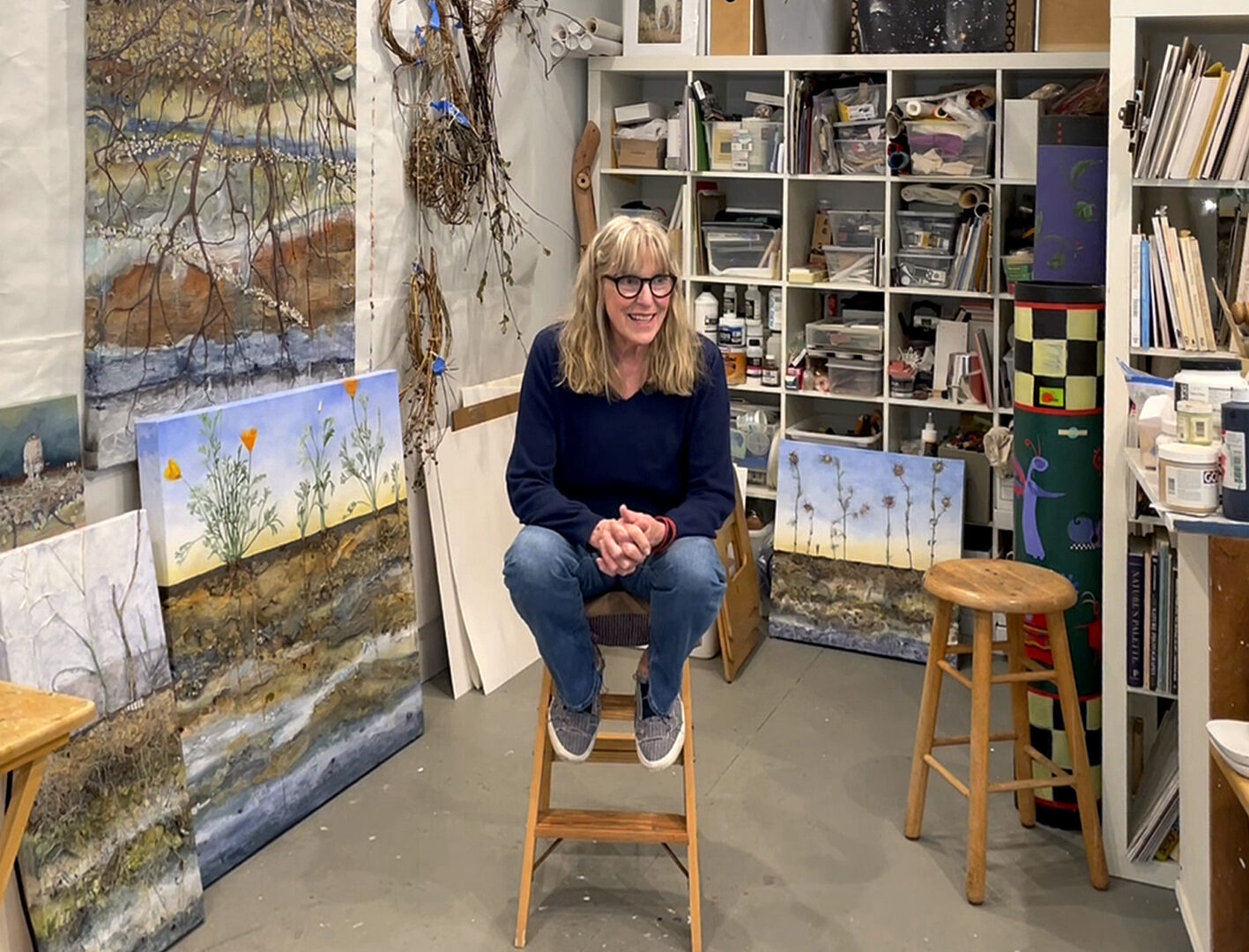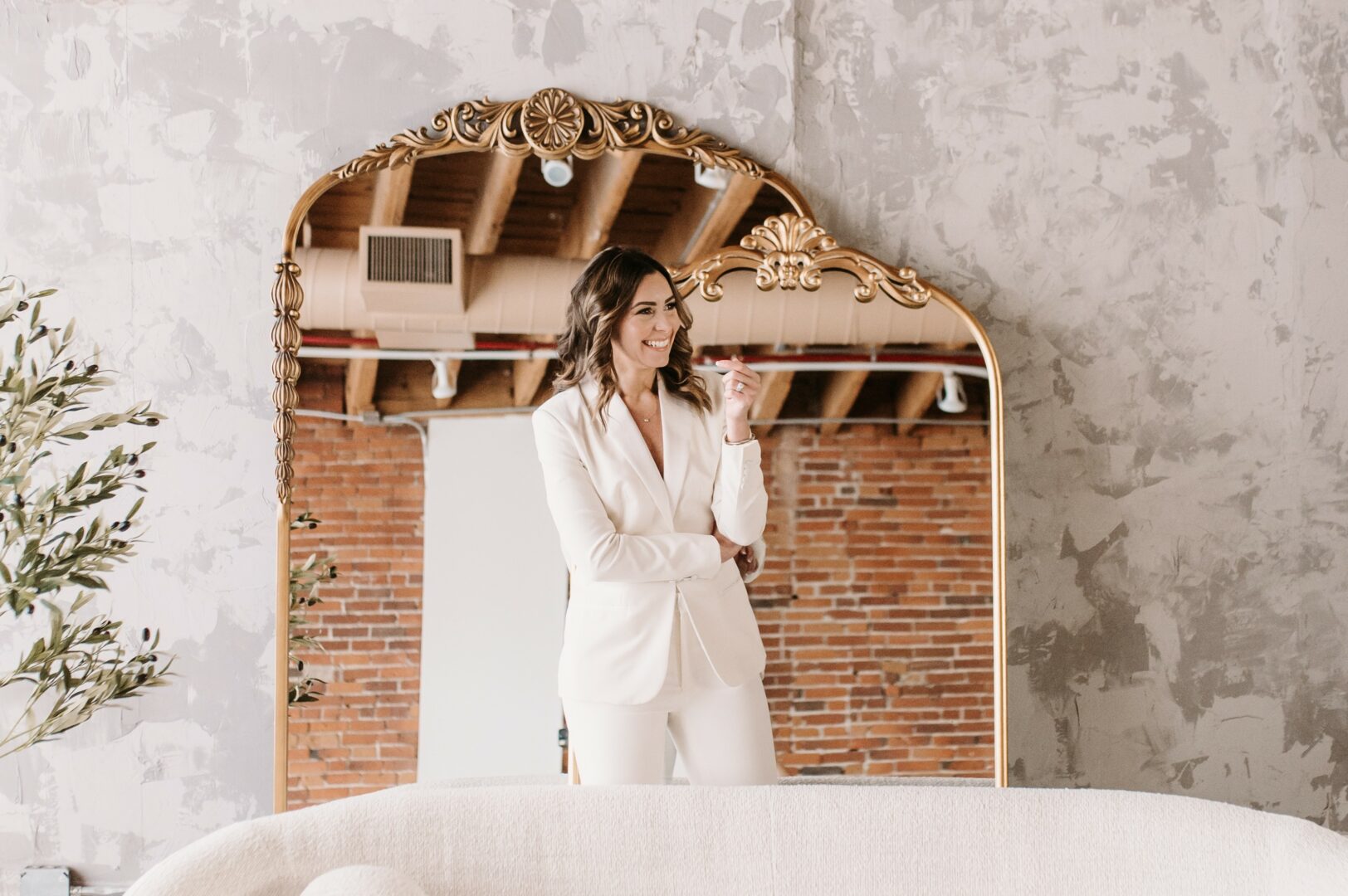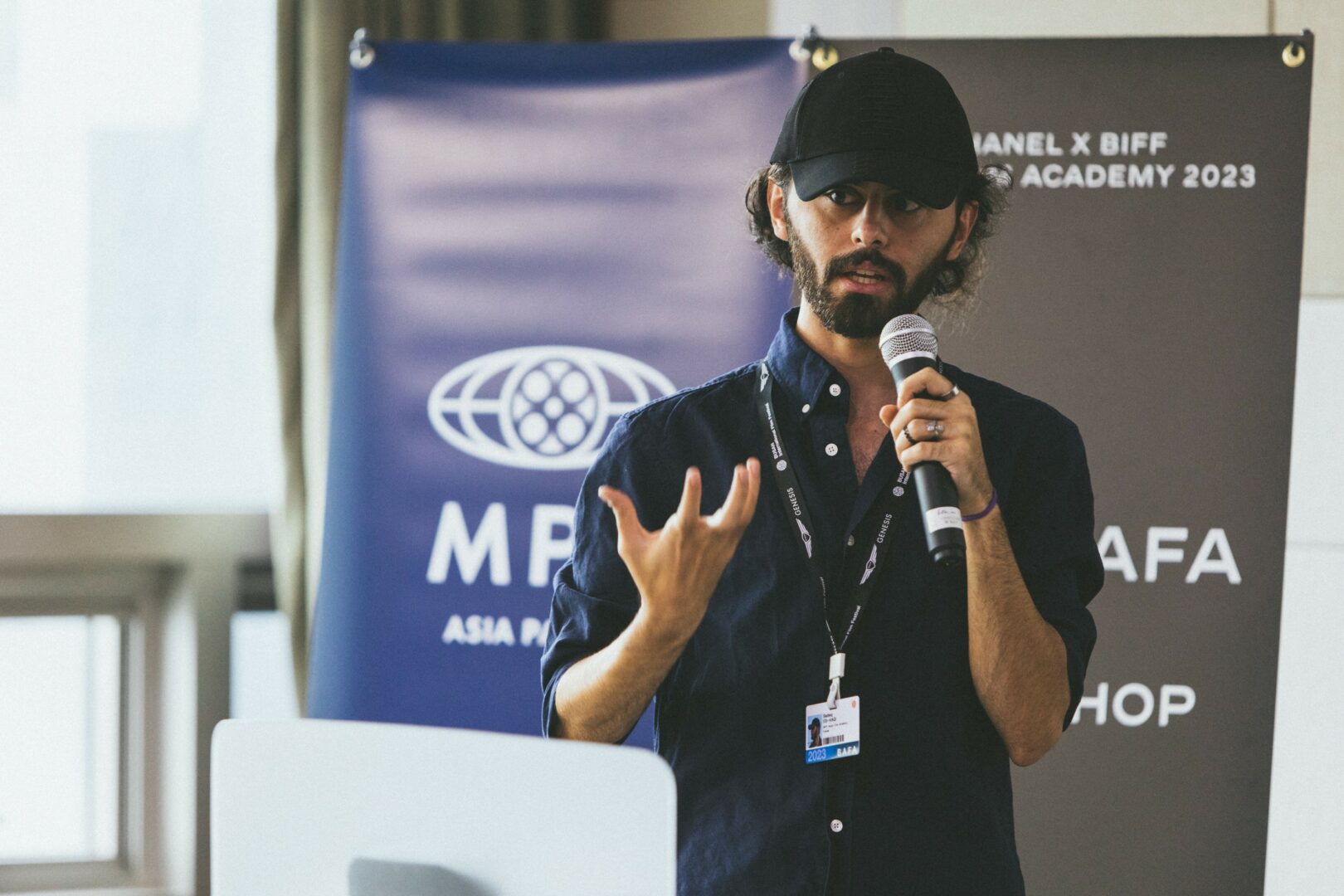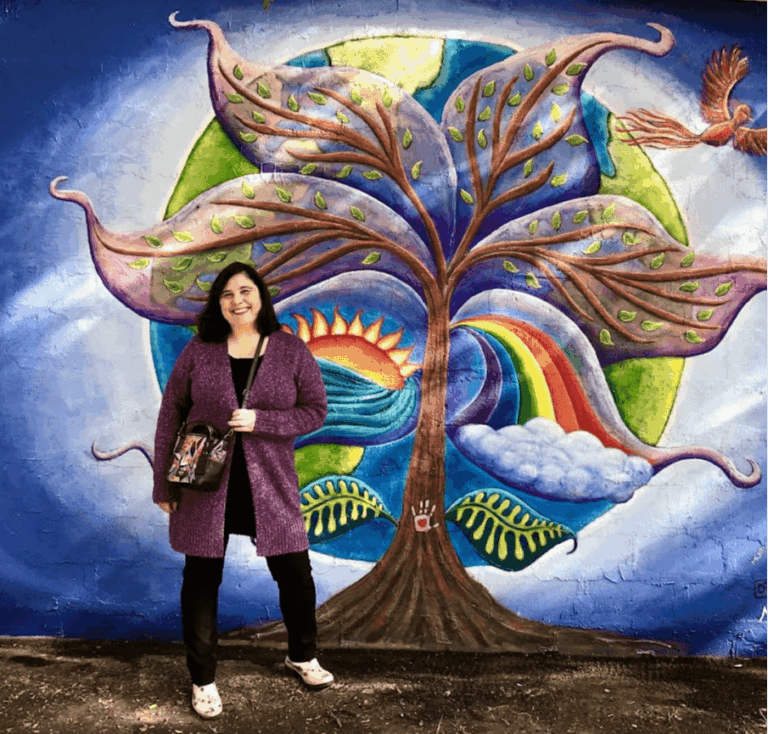We were lucky to catch up with Susan Carkeek recently and have shared our conversation below.
Alright, so we’re so thrilled to have Susan with us today – welcome and maybe we can jump right into it with a question about one of your qualities that we most admire. How did you develop your work ethic? Where do you think you get it from?
When you ask about resilience, work ethic, and optimism, I find that for me, they are all entangled with each other so it is difficult to single out one as more seminal.
I must have had an optimistic set point as a child, and yet, even then, I was aware of the darker things. In my adult form, I realize that I chose optimism as I also kept an eye out for the darker things that seemed capable of undoing my world. One thing that appeared to keep the darker things at bay, was work.
I was asked to do more chores than most of my peers and instead of spending a lot of energy fighting those expectations or being miserable, I developed a trait that has helped me succeed over and over. Namely, the ability to surrender to the task at hand and focus on doing it well. I not only focused on a quality outcome but I also got involved in finding the most economical way to do that task. It became a creative puzzle to solve and completing it turned out to be satisfying. The positive feedback I got for a job well done, helped reinforce my optimism. This became a practical pattern I would go to repeatedly when difficult challenges disrupted my life and accomplishments. Later, when I became a single parent of a critically ill and neurally divergent daughter, I used that combination of skills to start Fly on the Wall Art School, that I owned and operated for thirty years. The Fly grew to 75 weekly students during the school year and an additional 150 in art camps during the summer. This not only let me earn the income I needed, be locally available for my daughter, but also, continue making and showing my Art, albeit, at a slower pace than when I was only an artist.
This combination of skills are not magic, talent, or genius. They are simple practical steps that create positive outcomes and help me trust in my ability to overcome challenges. In time, I became more aware of how it worked. I was able to incorporate this with the curriculum at The Fly and saw it create opportunity and success for my students as well. Students learned to withhold judgment about the task at hand, find creative solutions, learn to trust themselves (often looking like optimism), and work through challenges to experience a deep satisfaction with what that creates. As I saw mental illness increase in my students peak during the pandemic, students were able to find satisfaction and positivity in what they were creating. They were able to hold their own with the stress and anxiety of the situation. It reminded me of something I heard in an art history class, art and passion did not make van Gogh mentally ill…but rather, he was mentally ill and his art helped him be more sane.
Personally, I was able to meet crisis after crisis with my daughter’s situation and needs, continue my studio work, and return to exhibiting after being derailed from exhibiting three major times.
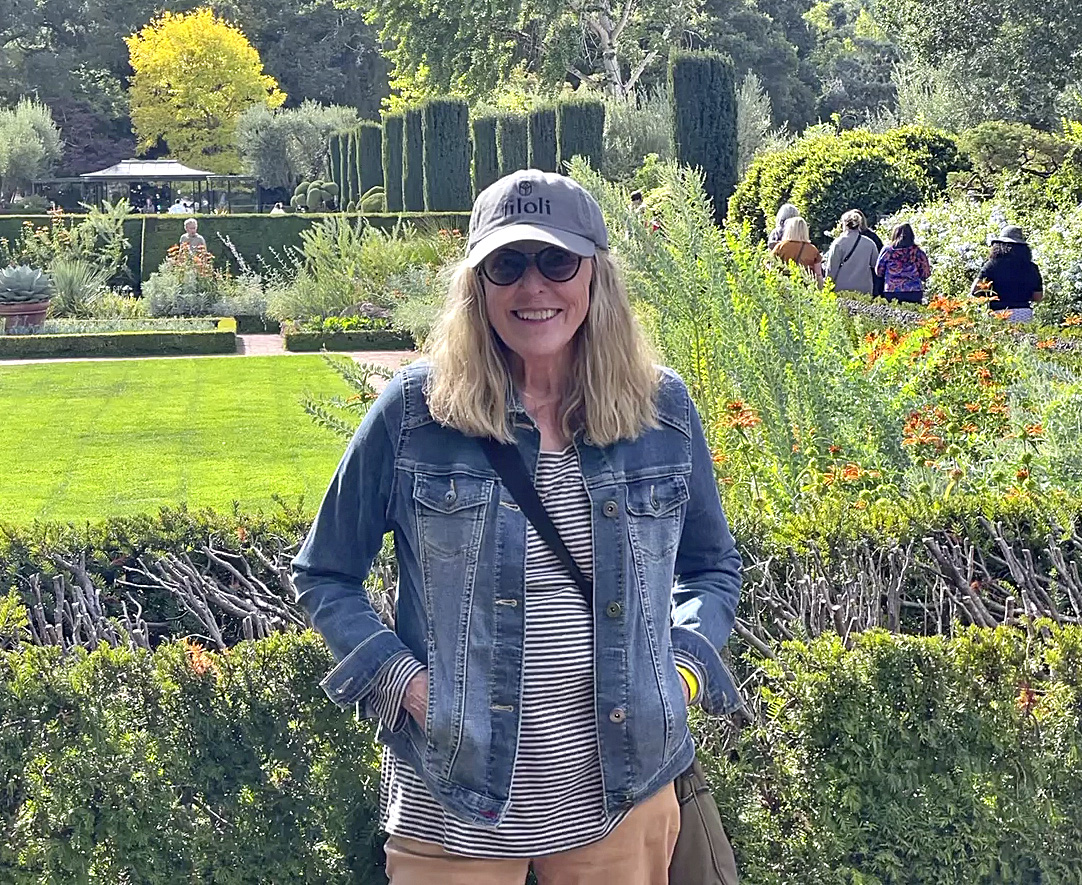
Appreciate the insights and wisdom. Before we dig deeper and ask you about the skills that matter and more, maybe you can tell our readers about yourself?
My primary job right now is my art work. After fifty years of making art, 40 years of that was making art and teaching. That said, I always told students, parents, and administrators, “I am an artist that teaches, not an art teacher that makes art.” Teaching can easily eclipse your own art and that was a challenge I faced squarely…and to do that I needed to continue exhibiting and finding places for my art to be seen. Being seen means that the work is taking on a life of its own…and if done well enough, the work then makes connections and meaning on its own and I am no longer needed. That is Job Completed. Some artists have that in their life time and some, years later, after they are gone. I have already experienced much of my work finding places and I count myself lucky for it.
Twenty-five years ago I shifted from more abstracted philosophical work to environmental work. My first foray with representational work was my garden and it dealt with the connection between mental illness and our human disconnect with nature. The first of the environmental work was Voltaire’s Garden and was about the look and feel of caring about nature. That work then morphed into Undoings, the unintended undoing of nature by humans. Next came Dirt • Plant • Sky which is one of my present projects. Simply put , Dirt • Plant • Sky explores human relationships with the dirt, plants, and the sky. The work combines a very tactile dirt (and sometimes soil), with botanical style plant(s)… often with a twist… and sunlight and atmosphere for the sky. Dirt • Plant • Sky was included in the de Young Open 2023, a solo exhibition at M Stark Gallery in Half Moon Bay, CA., and is presently exhibited in a Chan Zuckerberg Initiative exposition, in partnership with the Redwood City Parks and Art, in Redwood City, Ca. for a year.
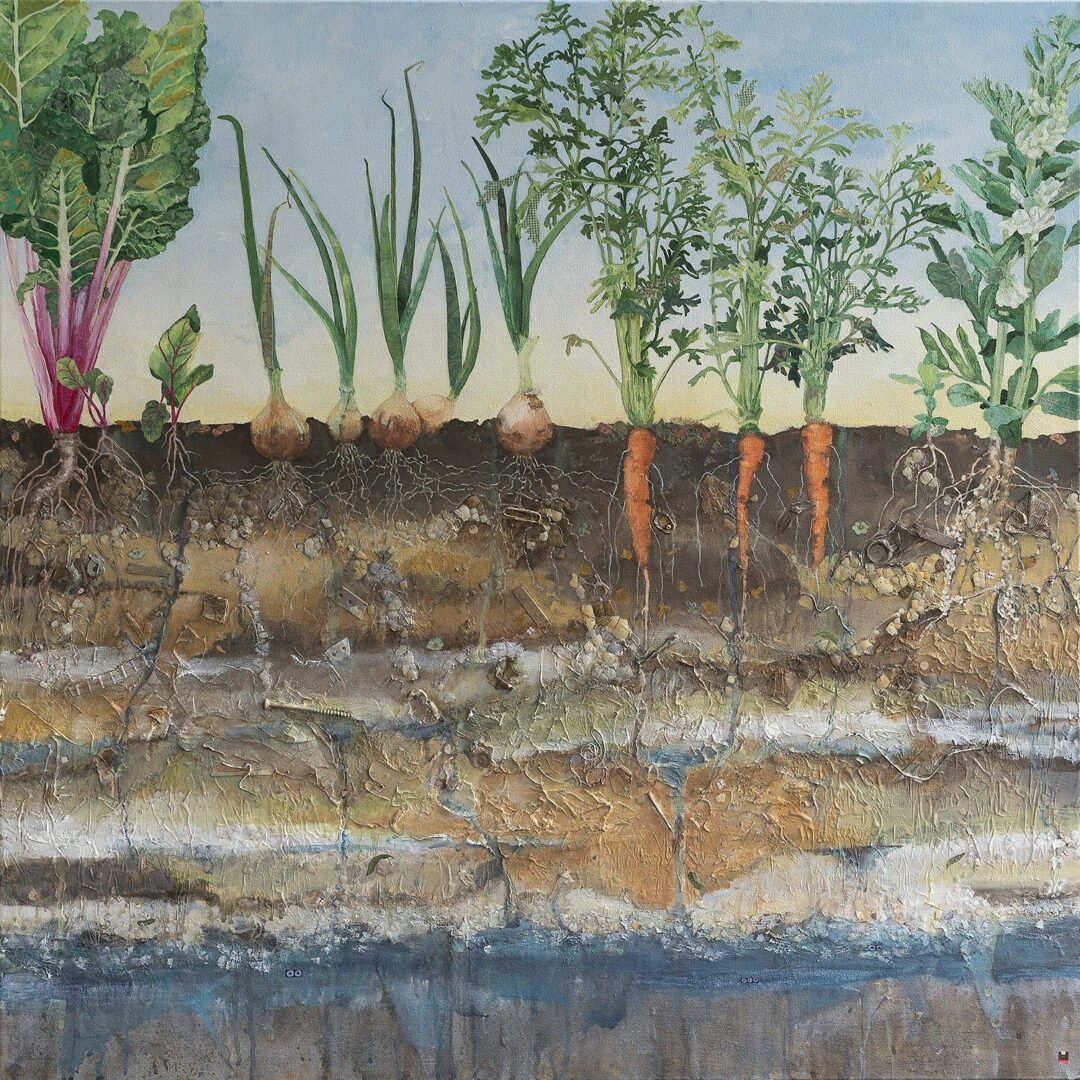
There is so much advice out there about all the different skills and qualities folks need to develop in order to succeed in today’s highly competitive environment and often it can feel overwhelming. So, if we had to break it down to just the three that matter most, which three skills or qualities would you focus on?
When I look back, I feel my focus on the work was a big factor in what I have accomplished. I always had a belief that if the work was good enough and compelling enough…it would find its place. It sounds very naive when I hear myself…but when challenges disrupted the opportunities, my inner conversation was, “You are an Artist—Just make Art—It’s what you do—If it is amazing—Compelling—Good enough—it will find a path—Your job is to get good and do your art.” That put me in a frame of mind to not fight life and focus on what would make my art better—e.g., research, intense seeing, drawing, and improving my craft, which also was exciting and very satisfying.
I always told my students that the most important quality they bring to their art is themselves, “make my life bigger by showing me what YOU see and experience.” Combine that with craftsmanship and it’s an amazing combination. I can’t help but notice how much harder it seems for students who spend hours a day curating a persona and scrolling social media. It makes it more difficult to discover who you are when you are receiving so many opinions from others. One of my jobs was to help students become aware of who they are naturally and then they could amplify that. My advice to anyone working to find a place in the arts is find supportive places where you can safely discover more about who you are and then share that person you discover with the rest of us.
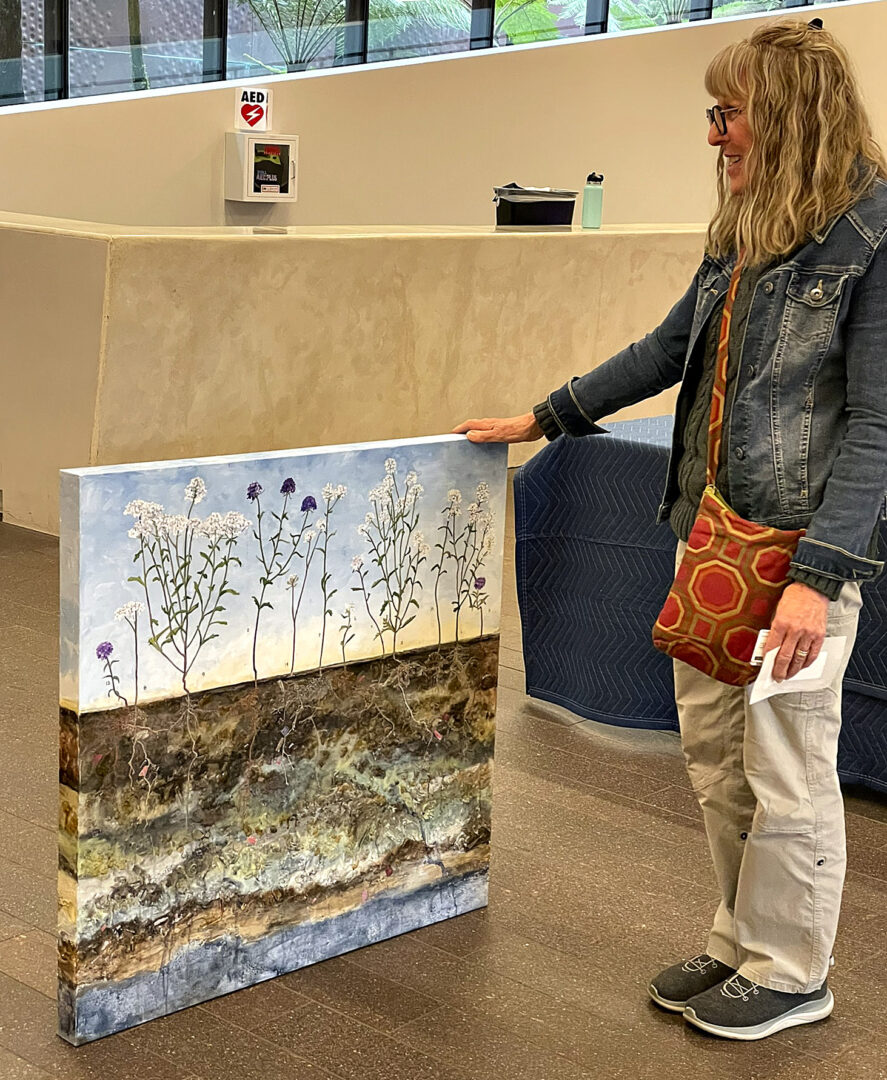
Awesome, really appreciate you opening up with us today and before we close maybe you can share a book recommendation with us. Has there been a book that’s been impactful in your growth and development?
I love my language and many of my most cherished beliefs have come through artists and their work…so here’s my list of artists that have taught me wisdoms that I use, trust, and navigate with.
Claude Monet; that representational and beautiful work can be revolutionary.
Giovanna Garzoni; if she could make a place for her work in early 1600 Italy…there was no excuse for me. Plus, her still life art often featured house flies. I have a long artistic relationship with houseflies, i.e. be real.
Richard Diebenkorn; He painted the light of southern California Beach Communities…he embodied that light and made something so beautiful it can heal…just like the places he paints can often heal. Paint what you love.
Squeak Carnwath; Pay attention and keep an eye on the dark things. There are skills that help you know what’s real when the dark things get noisy…counting, making lists, and slow observations. The monks laugh because life is hard and joyful.
William Kentworth; Allow room for the viewer to participate…it’s a conversation. Give viewers gaps and spaces to enter that conversation.
David Hockney; Scholarship and gut are not opposing forces and things often get interesting when they are combined. Embrace new technology on your own terms.
Joan Mitchell; Every mark has energy, power, and communicates. Stop, gather…then mark.
Henri Matisse; Decorative can be hard art. Paintings can Heal. Peacefulness becomes possible when you use the Creative/Inspiration model rather than the boredom/excitement model for doing things.
Françoise Gilot; She painted…it’s who she was…in spite of Picasso’s attempts to derail her, in spite of challenges, or in spite of her age. She died at 102 years of age. Picasso could not break her…she remained sassy and intelligent and painting her entire life.
Ai Wei Wei; Nothing is left unused to support the intention of a piece of his art. The materials, who helps him, where it comes from, how it looks, the size, money spent, with whom, where, and of course all traditional art considerations all line up to express facets of what his focus is. It gives his art a wider bandwidth. Ai Wei Wei walks what he talks. There is no separation between his life and his art.
Hilma af Klint; Attaches spiritual qualities to botanical drawings of plants with an array of mysterious and mystical symbols of her invention. She believed in her own work so much she asked family members to protect it as a collection only to have it be discovered and become meaningful 100 years later.
And the second question I wanted to respond to. Interestingly, I am actually at a time of my life where the end is in sight…so I am living that “decade left” experience. For me, I will make art until I can’t but, I do have a project I have started that I want to see through. Because I paint about a healthier relationship to nature, I am working at that in my own world, in real time. I have mitigated construction damage to dirt on property in the Bay Area by building healthy top soil and continuing to work at it in hopes of measuring it in feet rather than inches. I have built hedge rows and other features for native animals, introduced native plants, practice non-disruptive, chemical free gardening and now I am growing redwood trees. I want to use this project to unlearn previous unhealthy beliefs and attitudes but also experiment with trying to connect with the unvoiced beings around me. I am providing care for 50 young sprouts and saplings of Sequoia Sempervirens (Coastal Redwoods).
My goal is to start a reforesting project in my community. I happen to live in the area that Coastal Redwood trees once lived and as the non-native Eucalyptus are removed because of fire risk, it leaves a great opportunity to replace them with groves and forests of these native, ecological helpers. Each of these trees in my care, get a name and recorded history of their unique life. I am hoping to enlist the community members to adopt trees, get to know them as unique beings and care for them when needed (dry months). I am painting baby portraits of these trees in a softened dirt • plant • sky style with symbols uniquely fitting to what I have observed of that particular tree–being. I have twenty trees that are one year from earliest planting time…and thirty sprouts I started from seed, two years from earliest planting time. This project requires embracing redwood tree–time…which is another way to practice releasing human centric thinking. This is a grove or forest that would not be a forest for 100 years. The two year olds are twelve days old in human–time…no wonder they are so fragile. Plus, they are being raised without the help of a parent. Just logging in the changes for the baby trees and watching them solve problems have been a total joy. Naming them was stressful, what language do you use? I counseled with an Ohlone woman and she encouraged me to just do my best but keep sitting and listening to them…they would tell me if I got it wrong. I continue to practice listening…and I paint. It is what an artist does.
Contact Info:
- Website: https://smcarkeek.com
- Instagram: smcarkeek
- Facebook: Susan Combs Carkeek Harris
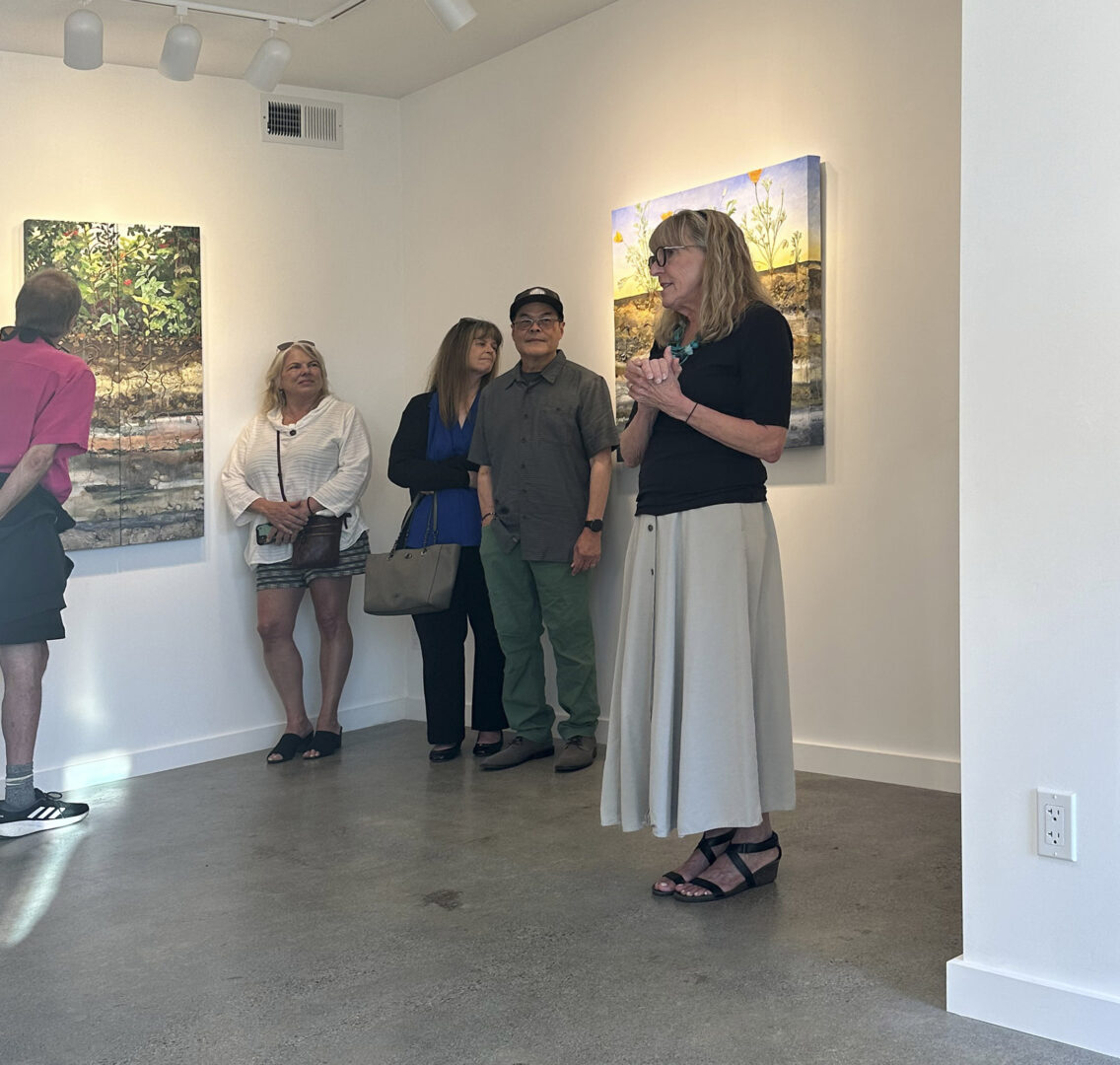
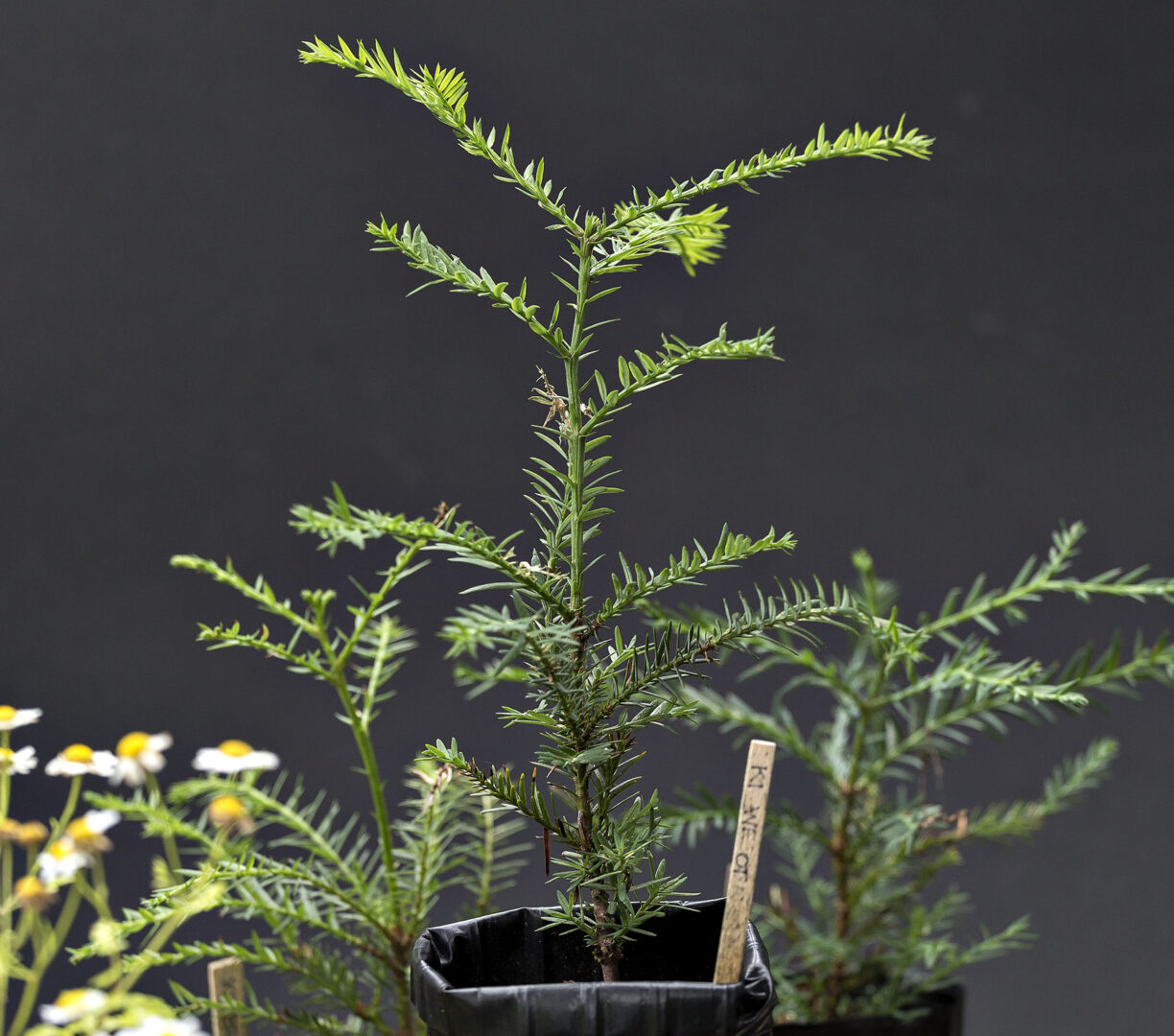
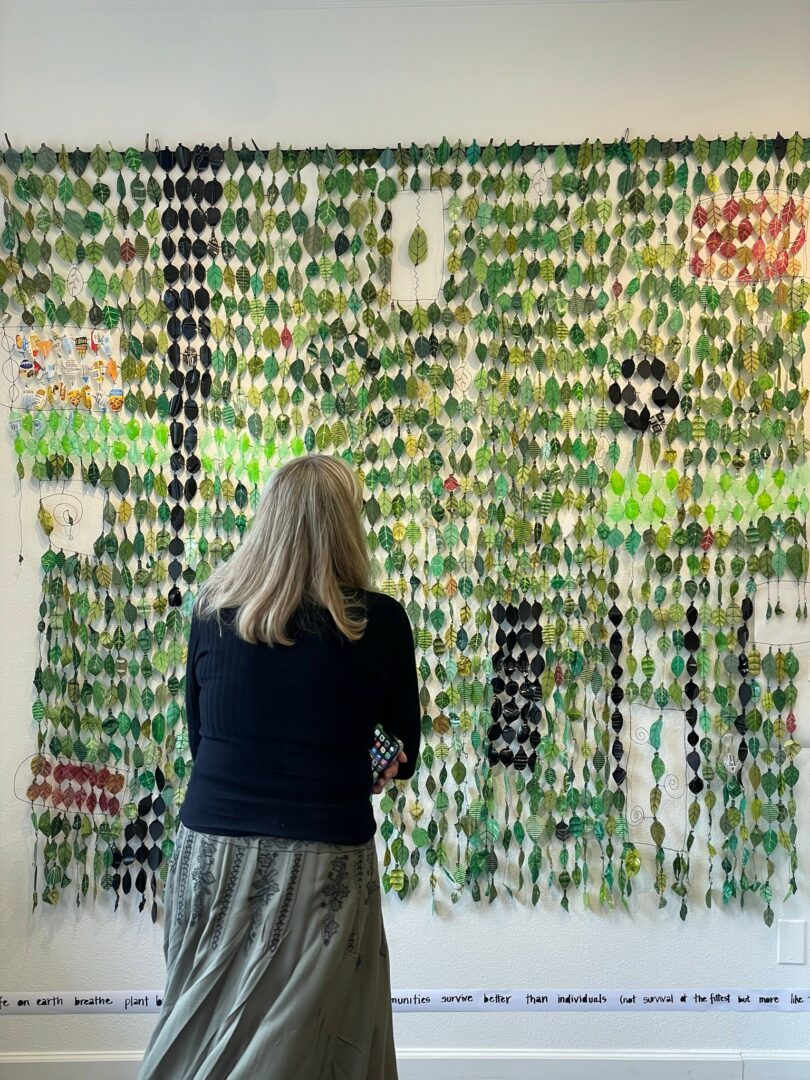
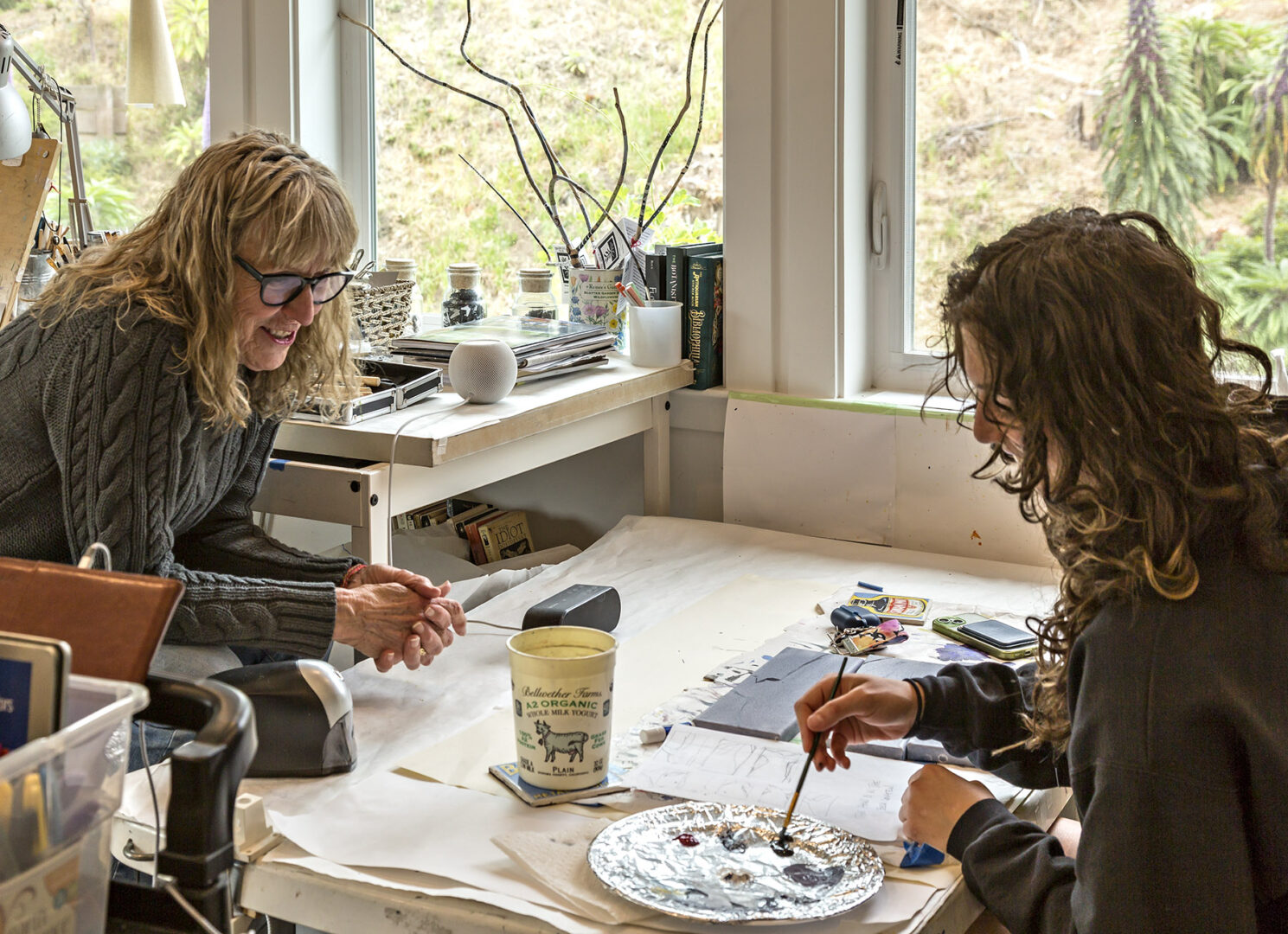
Image Credits
7 Photos by Bruce Harris
Carkeek at M Stark Gallery by Cindy Newth
so if you or someone you know deserves recognition please let us know here.

